This is a review that we have waited over three quarters to publish. Ever since we saw the ASUS EG500-E11 at SC22 this has been high on our list of servers to take a look at. This is a short-depth 1U front I/O server for 4th Gen Intel Xeon Scalable processors. In our review, we are going to show why it is one we have been anticipating since November 2022. As a quick note, we are doing this review very early in the release cycle.
ASUS EG500-E11 External Hardware Overview
The server is a 1U system, but it looks very different from traditional 1U servers you may have seen. One side has two 2.5″ NVMe bays but instead of being the front of the system, it is actually the rear with a large fan array.
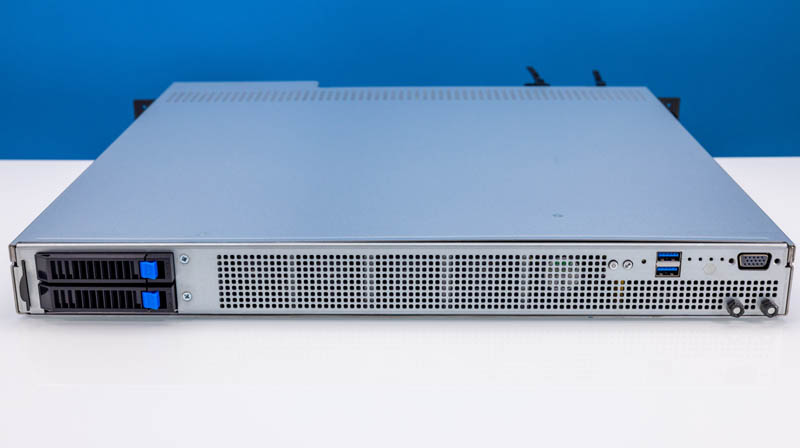
There are still two USB 3 ports and a VGA port along with things like status LEDs and the power button, but those are designed to be pointed to the rear of the rack.
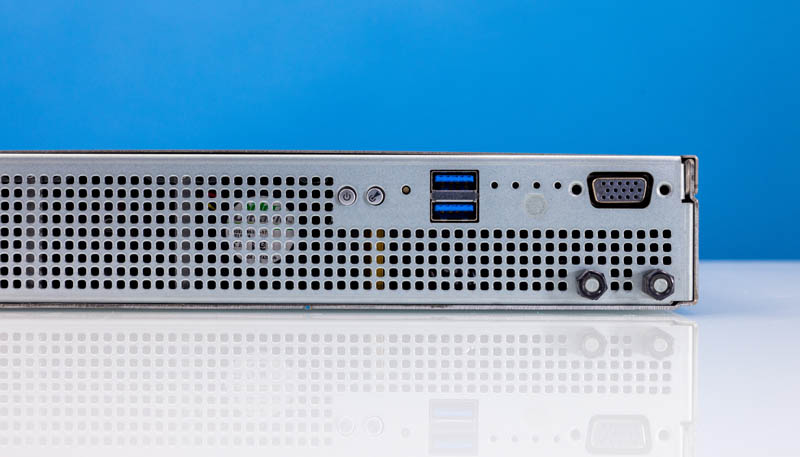
The two NVMe bays still give us some rear storage.
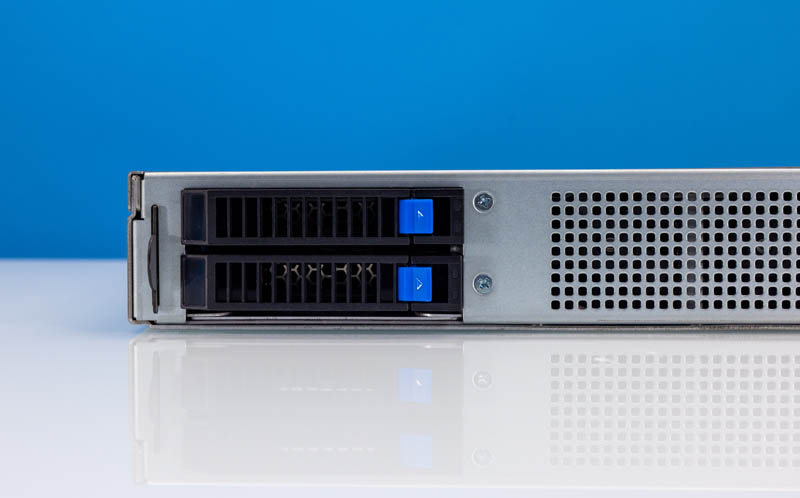
Here is a Samsung NVMe SSD in the trays.
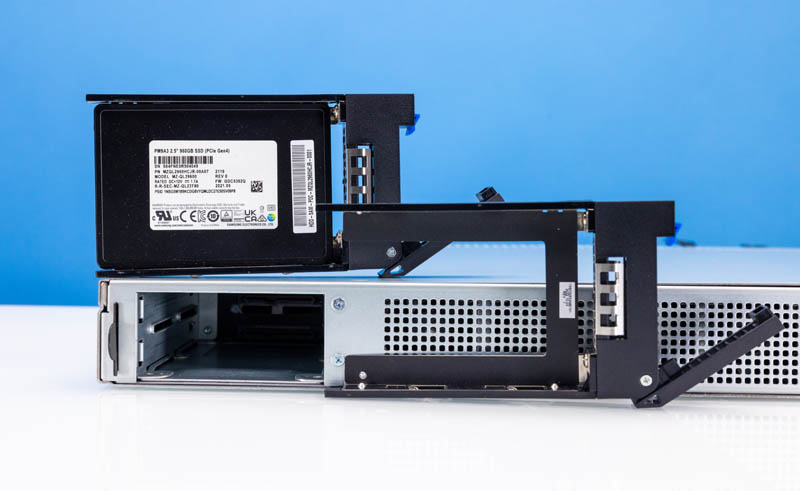
The more exciting part is clearly the front of the chassis. This is a front I/O server and it shows.
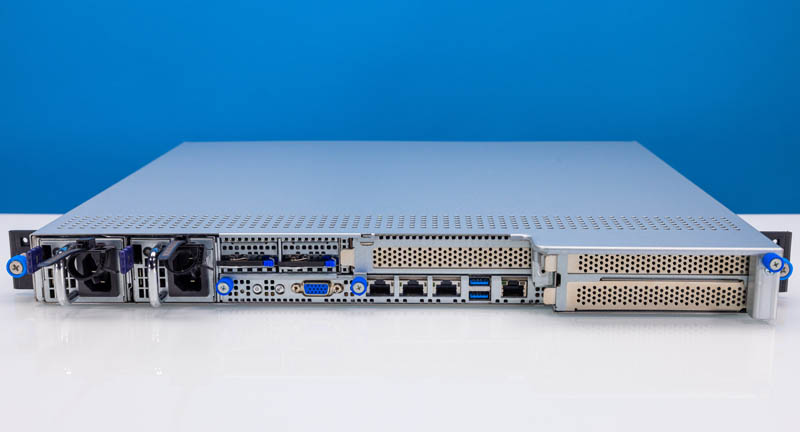
The first feature we see is a pair of power supplies.
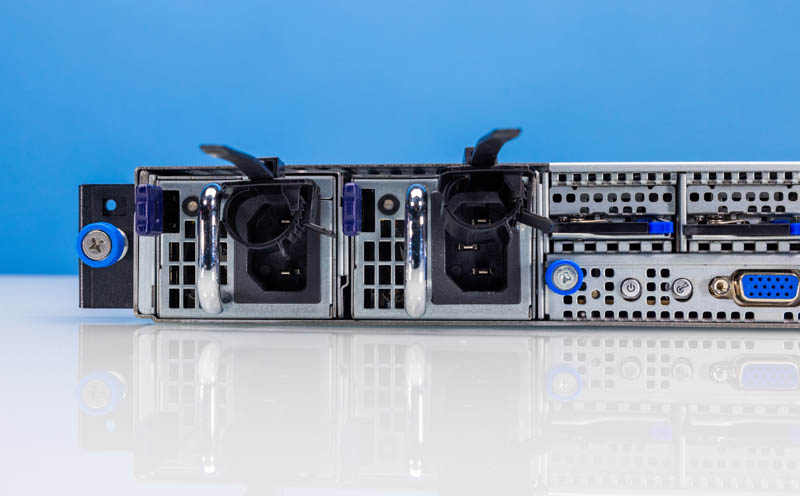
These are 650W redundant power supplies on the left side of the chassis.
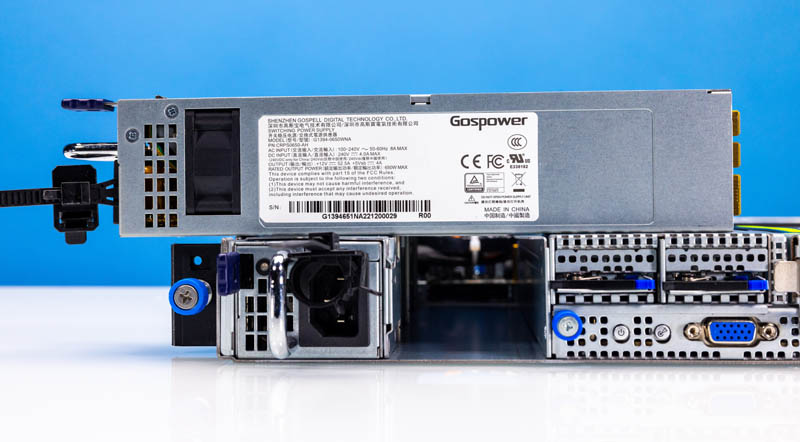
In the center, we get a number of features. Those include two E1.S drive bays, the main I/O, and a full height PCIe riser.
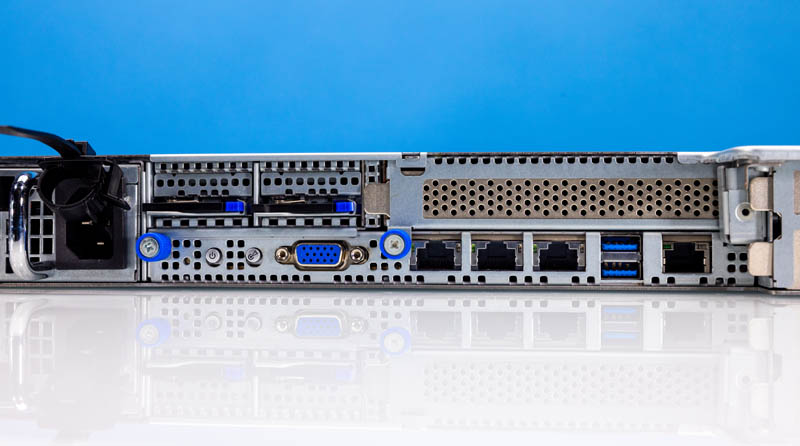
One area where we hope ASUS improves on with the full production units is labeling. A great example of why is the rear I/O. Features like the VGA port, two USB 3 ports, and power button are fairly obvious to most folks familiar with computers. The four ports that look like RJ45 ports are probably less obvious. We originally hooked these up incorrectly because we did not have a manual nor labels on the motherboard. The first port on the left is the IPMI port. The next two ports are 10Gbase-T ports. 10GbE connectivity is powered by the Intel X710-T2 onboard. The final port all by itself across a gap of USB ports is a console port. These need to be labeled.
The E1.S bays are a modern feature that we like to see in servers. You can learn more about E1 and E3 EDSFF taking over M.2 and 2.5 in SSDs here. SSD vendors can build drives that have better cooling, higher power/ performance, and that are hot-swappable making E1.S a more modern way to fit a slender drive into a system. ASUS has little drive caddies for these bays.
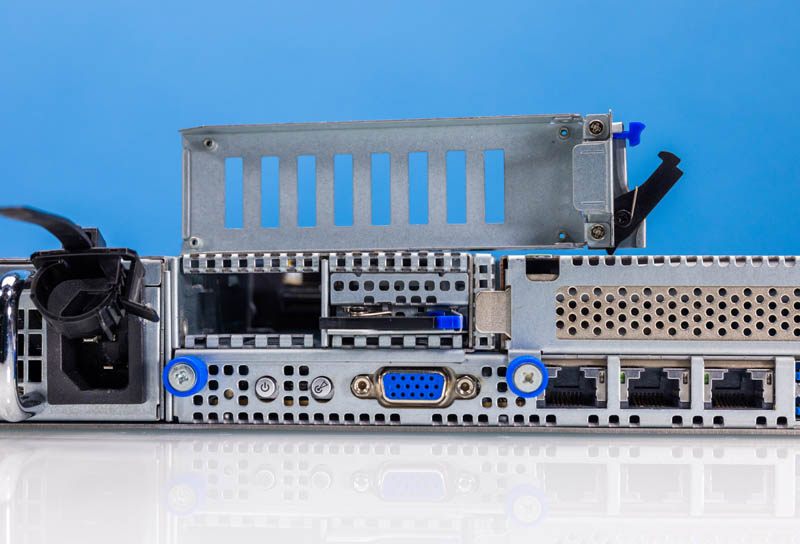
The left side has two PCIe full-height slots.
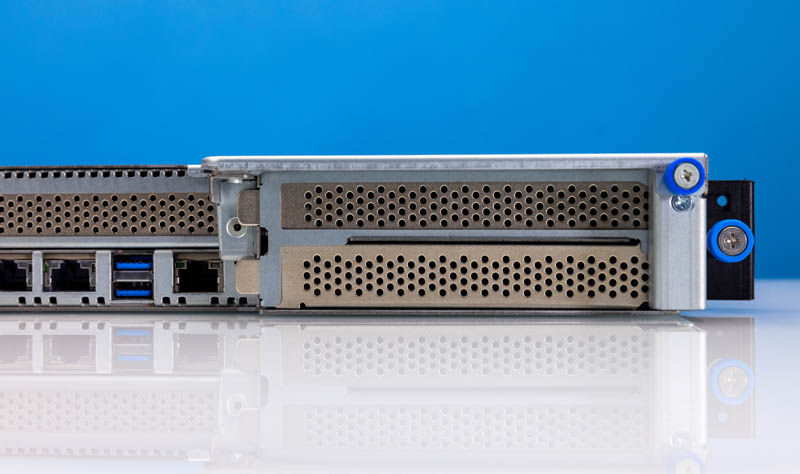
Next, let us get inside the system to see how it works.

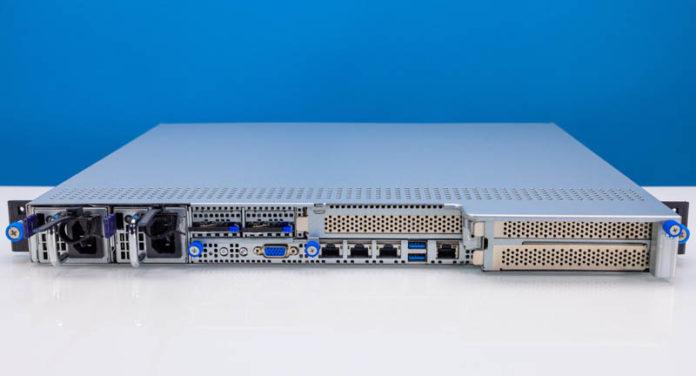



After reading the article on the ASUS EG500-E11 review, I’m truly impressed by the detailed insights provided about this upcoming 1U Edge Intel Xeon Server. The article offers a comprehensive overview of the server’s features, specifications, and capabilities. The in-depth analysis of its performance, power efficiency, and potential use cases provides valuable information for those seeking a powerful and efficient server solution. The inclusion of technical details along with real-world applications showcases a thorough evaluation of the product’s strengths and potential benefits. This type of review is immensely valuable for IT professionals and businesses looking to make informed decisions about their server infrastructure. The article’s focus on providing a balanced perspective and highlighting both strengths and areas for consideration demonstrates a commitment to delivering accurate and unbiased information. Overall, it’s an informative and well-structured review that equips readers with the knowledge they need to assess the ASUS EG500-E11’s suitability for their specific needs.
Surely they just put the rack ears on the wrong end of the case? Who in their right mind would put the PSU connectors on the front?
Super common on things like carrier racks. If you look up Open vRAN servers, for example, this is extremely common, but it depends on the customer/ country.
I’ve got to love the aggressively utilitarian design. No aggressively-branded and structurally irrelevant plastics kit; or bezel that eats 10% of the airflow in order to look cool in the cold aisle glamor shot that most units will never actually see. Just the actual computer.
“ASUS ahs…” in page 1 should be “ASUS has…”
Otherwise, this article is as densely packed with good information as the server’s chassis.
Looks like a very interesting system for people looking for some decent compute specs in a shallow rack. Wouldn’t be surprised to find SMBs deploying these on-prem as their only server.
As you the article pointed out, the storage options are oddly diverse. The use cases exist for population each set of bays, although I wonder if, with the production models or subsequent years’ models, ASUS will unify the various options down to one or two combinations of drive types and form factors vs. offering M.2, E1.S, 2.5″ NVMe and 2.5″ all in the same chassis. This unit’s offerings are a hodgepodge, but that could be a hallmark if the transition to newer standards.
I’ll keep my eye out for the final configurations in any case.
It looks like and entry-level Dell server with better features like the U2-NVme slots.
Nevertheless, what’s about reliability after 5 years ? Asus notebooks are going so bad after warranty ended,
I do not trust them anymore. I’m still using DELL R210, R610, R820 without any trouble.
The wrong place of rack ears is incredible. Is there holes to revert them on the other side ?
Who has PDUs on the rack front side ? I just revert my 24 x SFP+ switch to the back of my 42U rack since there is no patch for that on the front side, everything else has disks and controls switches on the front.